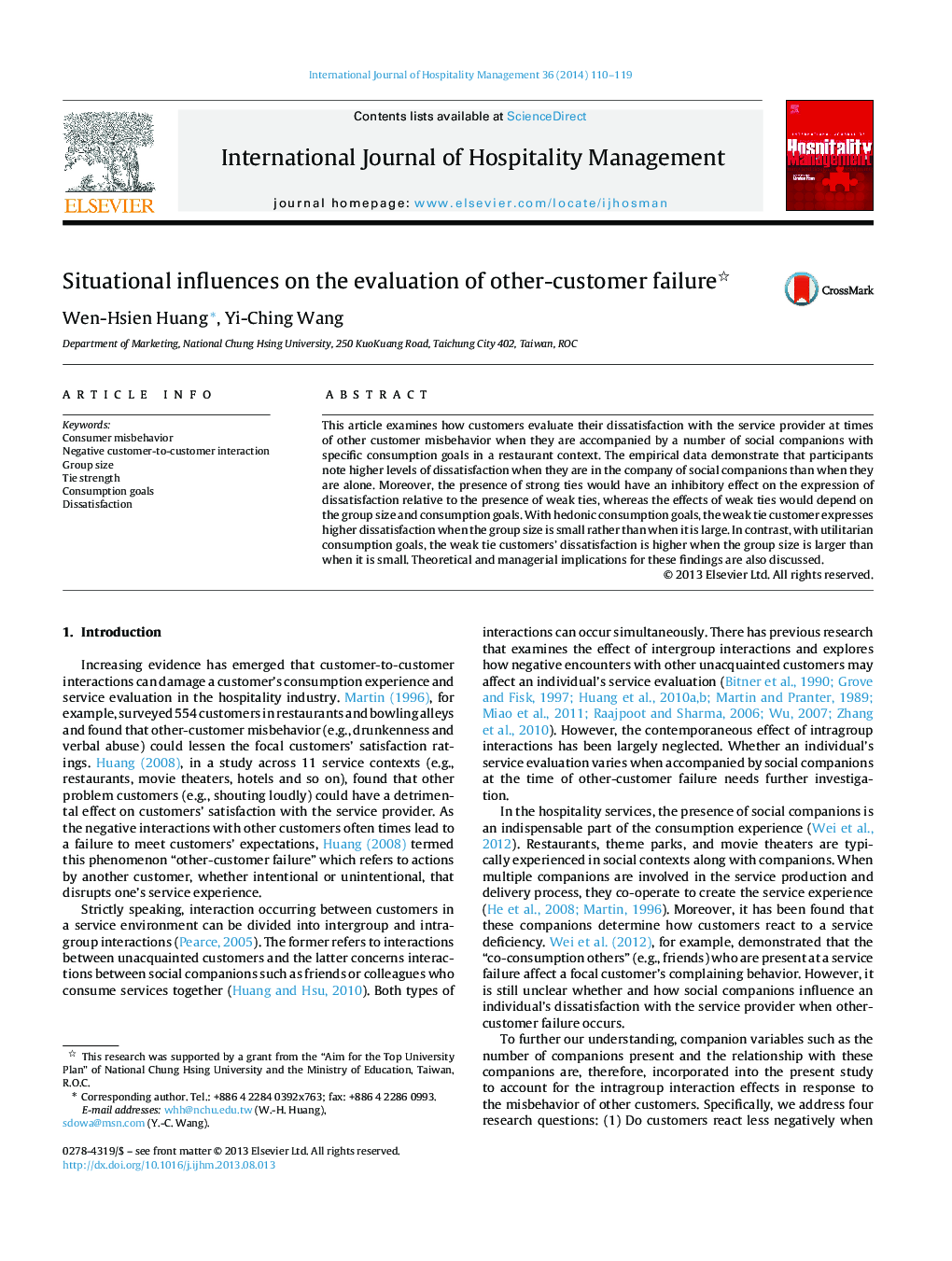| Article ID | Journal | Published Year | Pages | File Type |
|---|---|---|---|---|
| 1009510 | International Journal of Hospitality Management | 2014 | 10 Pages |
This article examines how customers evaluate their dissatisfaction with the service provider at times of other customer misbehavior when they are accompanied by a number of social companions with specific consumption goals in a restaurant context. The empirical data demonstrate that participants note higher levels of dissatisfaction when they are in the company of social companions than when they are alone. Moreover, the presence of strong ties would have an inhibitory effect on the expression of dissatisfaction relative to the presence of weak ties, whereas the effects of weak ties would depend on the group size and consumption goals. With hedonic consumption goals, the weak tie customer expresses higher dissatisfaction when the group size is small rather than when it is large. In contrast, with utilitarian consumption goals, the weak tie customers’ dissatisfaction is higher when the group size is larger than when it is small. Theoretical and managerial implications for these findings are also discussed.
